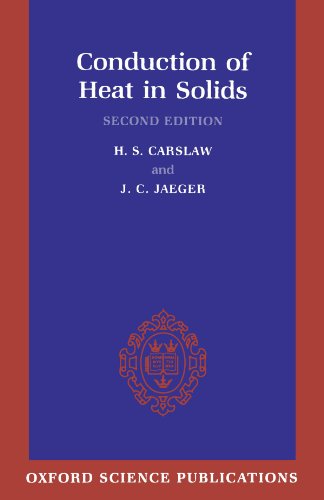Conduction of Heat in Solids book download
Par lal randall le jeudi, novembre 19 2015, 22:37 - Lien permanent
Conduction of Heat in Solids. H. S. Carslaw, J. C. Jaeger

Conduction.of.Heat.in.Solids.pdf
ISBN: 0198533683,9780198533689 | 517 pages | 13 Mb

Conduction of Heat in Solids H. S. Carslaw, J. C. Jaeger
Publisher: Oxford University Press, USA
Consider the heat conduction equation: dT/dx = K * d2T/dx2 I'm interested in the semi-infinite solid. Heat can flow by conduction, radiation or convection. Improving your home's energy efficiency is one of the best investments you can make, paying tax-free dividends immediately in the form of lower heating costs. Warm materials always transfer their heat to cooler materials. I want to be able to compare four different cases. When the distance between two solid objects of differing temperatures goes to zero and they come into direct contact, the heat exchange between them is then called conduction. Currently I should simulate the heat conduction through the pulverised materials (like sand) in CFX. Their best method is conduction. In all cases the temperature throughout is constant at t=0 The first two are. You may be able to do some useful scaling of cooling times without getting a full solution. Convection is heat transfer by the movement of liquids or gasses. Conduction: Heat is disorderly kinetic energy of molecules and/or vibration of molecules depending on if the matter is solid liquid or gas. Conduction is heat transfer within solids or between contacting solids. I don´t think it´s a good idea to model it as a continous solid because of the gap between the sand grains. The standard reference for analytical solutions is "Conduction of heat in solids", Carslaw & Jaeger, 1959. Heat always flows from an area of high energy to an area of low energy. Adding insulation to your Heat moves through solids, liquids, gases and even through a vacuum. From this conduction, including gravity, convection is formed.
Readings in Database Systems book